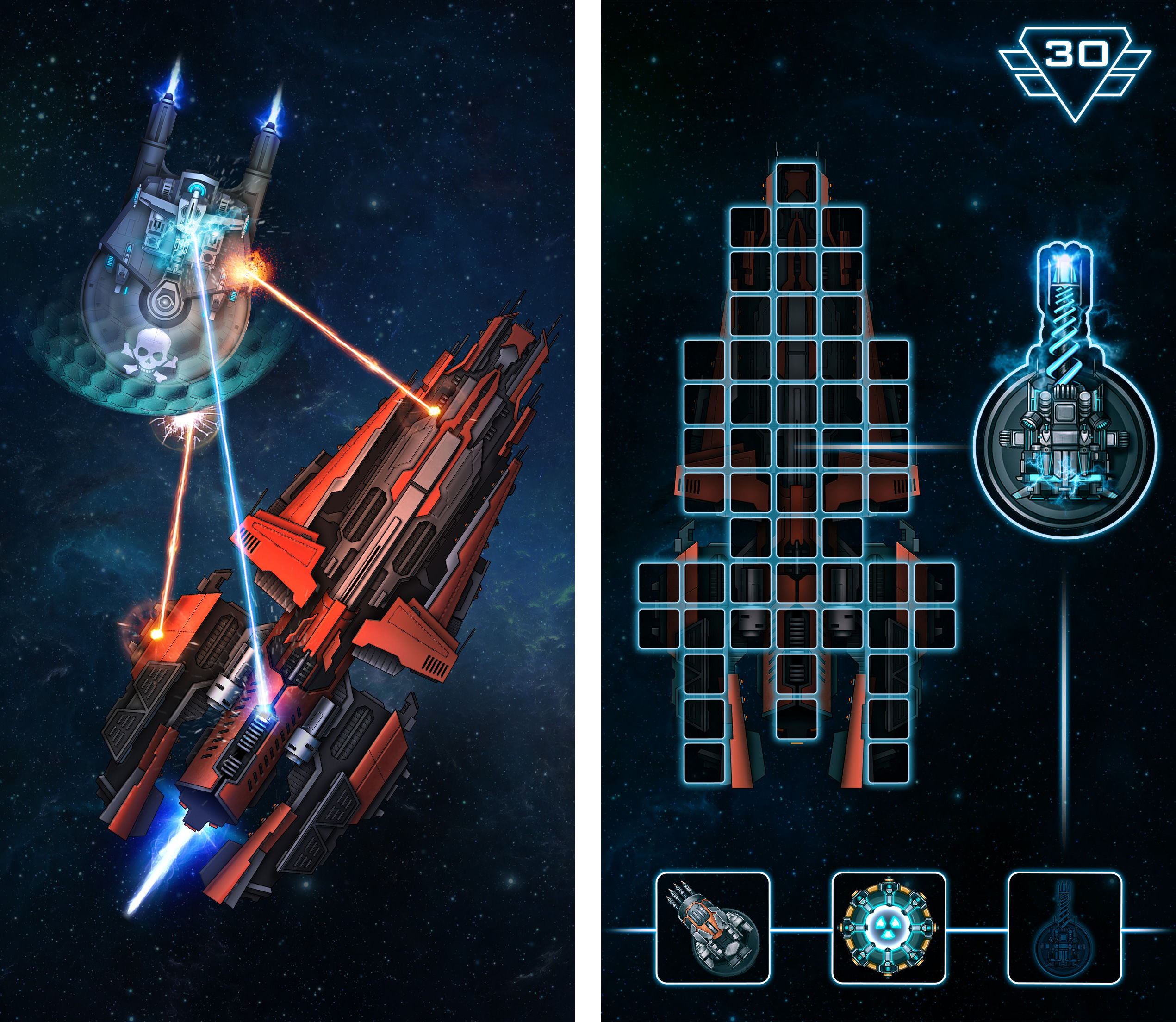The Kaliningrad studio HeroCraft together with the Getloyal retargeting system told how effective re-engagement can be, using the example of its own advertising campaign.
Space Arena and traffic for it
The case is based on the advertising campaign of the Space Arena: Build & Fight project. Now it is the highest-grossing Herocraft game. According to DataMagic’s estimate, of the $250,000 that the studio earns monthly from mobile, about $100,000 falls on this project.
The genre of the game is a modern variation of Maybrut. As part of the meta, the player pumps and places guns, defenses, engines on the spaceship, and then releases his ship onto the battlefield, where it fights in automatic mode with another player’s ship.

Space Arena: Build & Fight
Space Arena: Build & Fight is a niche project designed for an adult male audience that appreciates tactical gameplay and well—developed gameplay binding. That is, we are talking about expensive and very popular traffic among midcore projects.
Therefore, HeroCraft decided to resort to re—involvement – to return with the help of advertising those users who are already familiar with the project, but for some reason left it (they haven’t deleted the game yet, but they haven’t entered it for a long time).
Re-engagement (retargeting), as a rule, is cheaper than buying new traffic. At the same time, the indicators of such campaigns are traditionally higher. The main disadvantage of this type of advertising is the limited volume of purchases.
ROAS and the purpose of the campaign
During the campaign, HeroCraft tied the KPI to the ROAS metric.
ROAS stands for “Return On Ad Spend” or “refund of advertising funds”. It is usually calculated by dividing the product revenue earned through an advertising campaign by the cost of the same advertising campaign and multiplying by 100.
For example, if an advertising company for which $1,000 was spent resulted in revenue of $2,000, then we do this:
2000/1000 x 100%As they write on RTB Insight: “This is a business-oriented metric that is most effective in measuring how advertising contributes to the growth or decrease in the economic efficiency of a company.”
The goal of the campaign was formulated as follows: retargeting should pay off in a month. That is, so that the campaign on day 30 has ROAS > 100%.
It was also fundamentally important to return users from Tier 1, since the percentage of paying players in these countries is higher.
Retargeting features
The Space Arena: Build & Fight retargeting campaign was built on deep links.
Recall that deep links are links in advertising that lead to a specific application screen. For example, one that cannot be accessed in any other way.
In the Herocraft case, the player went directly to the action screen, which is only available via a deep link. This made it possible to increase the value of retargeting for the user: the player saw a unique promotion that was not in the game’s offer system.

Other players Space Arena: Build & Fight such promotion was not available
The selected model to launch is CPE (Cost Per Engagement).
This is a payment model for an engaged user. That is, payment is made only for those users who switched to the application when interacting with advertising.
According to the analyzed events, two segments were selected for return:
- Payers are those users who pay periodically, but have not made in—game payments in the last week.
- Level nine players who have not yet made payments. HeroCraft analysts found out that it is from this level that players begin to make in-game purchases. Users have already managed to understand and master the mechanics of the game by this level. And it is important at this stage to push them to the first purchase.
Traffic sources
Since they focused on Tier 1 countries, the developers launched campaigns in sources relevant to this task — Demand Side Platform (DSP, aka the excise for advertisers) and Facebook.

Example of retargeting Space Arena: Build & Fight on Facebook
If there is no point in explaining the advantages of using Facebook (today it is the largest source of traffic), then everything is less transparent with DSP.
The fact is that DSP allows you to find users in other applications. In other words, an advertising banner can translate to an offer in your game not only from a social feed, but also directly from another game.
Promotion methodology
- Android was chosen for the start and run-in of the campaign.
- Based on the first tests, we found out which GEO are the most profitable.
- We chose the top 10 countries with the highest indicators.
- Test bundles (GEO plus creative) were launched in these regions.
- We chose the most effective bundles and launched them on iOS.
- In parallel, the test bundles were tested on different sources.
All this work made it possible to scale the campaign and increase the number of daily purchases to a level that HeroCraft was satisfied with.
Results
As a result of the first month of the ROAS campaign on both sites, the total exceeded 204%. At the same time, the average conversion from reattribution to purchase (from the recorded opening of the application to purchase) was 25%.
Also on the topic:
